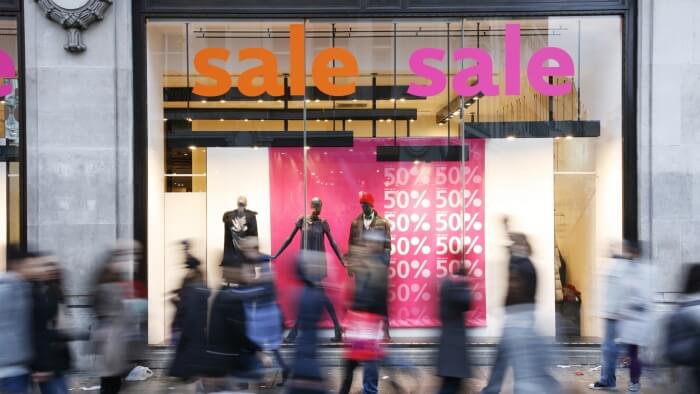Shoppers love accumulating points for freebies or discounts, but they like other stuff too. Andy Wood crunches the data to calculate the perfect loyalty mix.
Listen Up Retailers: Here Are The Components Of A Perfect Loyalty Scheme
Shoppers love accumulating points for freebies or discounts, but they like other stuff too. Andy Wood crunches the data to calculate the perfect loyalty mix.

Any business that wants to know its customers better and use that information to foster a closer relationship with them – whether a small chain of shops, a multichannel business operating through a select range of touch points, or a straight ecommerce business selling strictly through the web – could prosper from implementing a loyalty scheme.
Loyalty schemes should not be underestimated as tools for retaining customers and, if the benefits are right, attracting new ones. Research commissioned by GI insight last year showed that 94% of UK consumers are members of loyalty schemes. Increasingly, a sophisticated loyalty scheme is perceived as a must-have for retailers and other businesses in a competitive, consumer-oriented marketplace.
For those retailers looking to develop a scheme, it is important to know what works, and the same goes for those with a scheme and looking to get more out of it. The fine-tuning never stops – even with a successful loyalty scheme. And well-run schemes will evolve with the business.
"Just having a scheme and some points is not enough"
It is fundamental that any loyalty scheme be more than just a promotional mechanism for driving customer traffic – like a coffee shop drink card with stamps. This is just the modern version of the previous continuity collection programmes such as Green Shield Stamps and Esso Tiger Tokens. There is so much more you should get out of a loyalty programme than way of giving out freebies.
The key to the modern loyalty programme is that it enables you to gather customer information that you can then analyse to better understand your buyers and respond to their behaviour.
The idea is to segment the customer database and send specific groups personalised communications and targeted offers. You do this to not only foster loyalty, but to respond to consumers’ needs and inclinations, engaging with each individual more effectively and encouraging that person to buy more and more often, while opening the way to upselling and cross-selling opportunities.
But before you get that information and unlock the sectors of your customer base, you need to engage consumers in the first place and hold onto them. To find out what works best, we commissioned a survey of 1,000-plus UK consumers about what specific factors excite them most about loyalty schemes.
The rewards are important. And just having a scheme and some points is not enough. Research by Nielsen shows that 50% of UK consumers will quit a loyalty scheme or not join at all if they feel the benefits are not of value.
Our research showed that, although collecting reward points ranks highest among the aspects of a loyalty programme which motivates consumers to take part in a scheme, there is a wider range of factors that attract them to not only sign up but to remain active participants within the scheme.
The key drivers behind loyalty scheme sign-up and participation are:
Redeemable points
The opportunity to earn redeemable points ranked the highest motivator for signing up to a loyalty scheme, with 74% choosing this option – meaning that a quarter didn’t in fact rate it as a reason for taking part in a scheme. Yes, the vast majority of UK consumers are drawn to loyalty schemes that offer clear cost-saving benefits and reward points are one way of doing this. Yet, this is not the only way to encourage people to sign up to your scheme.
Vouchers/ coupons with a cash or percentage discount
A clear majority of the consumers surveyed – 60% – see vouchers and coupons that provide real savings as a big draw for loyalty schemes. To really ensure that your loyalty programme is successful, it is vital that these types of communications from a company or brand be relevant, timely and tailored.
It is essential that the customer data from a loyalty scheme is captured, analysed and applied properly in the targeting and creation of vouchers sent to members. Otherwise it just becomes spam or junk mail in their eyes
Special offers
Fifty-three per cent of respondents said they were excited by special offers. However it is important that these special offers really benefit your customer. Any day of the week a consumer can walk into a retailer in the UK and find some sort of offer which will save them money.
Special offers from loyalty schemes need to be specifically targeted towards your consumers to make them feel that they are getting something which has been tailored to their needs and it is something which they won’t get elsewhere.
Easy sign up and use
Again, unsurprisingly people are more likely to sign up to schemes which are easy to use: 24% of respondents said this was the top motivator for signing up and continuously using a scheme. Stay away from over-complicating things and you will have more people flocking to your loyalty scheme.
You need to get enough information on their preferences and interests, as well as all their relevant contact details, to begin by sending them meaningful communications but you don’t want to put them off with the mother of all web forms either.
Perks
For a significant minority of consumers, the little extras can make all the difference in them joining and using your scheme. As much as people are motivated by cost savings, free extras such as coffee or cake, special offers on birthdays or other occasions, and early access to new launches and discounts can be just as important to certain consumers in deciding whether to join a loyalty scheme and keep coming back.
The research showed that 17% of respondents identify complimentary treats as an incentive for joining a loyalty programme, 12% list event-linked deals and 12% cite exclusive/ first opportunity to buy new products and take advantage of deals.
Mobile app
Mobile accessibility might seem to be a natural loyalty scheme driver in today’s digitally-driven, smartphone-friendly marketplace, but having a hot app did not register as a major enticement for the vast majority of consumers. Only 6% of those surveyed said this was something which would excite them about a joining and participating in a scheme.
On the other hand, mobile loyalty apps are more of a factor for younger consumers: 10% of 18-24 year olds and 14% of 25-34 year olds say that they would be positively influenced by the offer of an app compared to just 2% of consumers in the 55-64 age group and 1% of those who were older than 65.
The percentages remain relatively small but some brands – especially those aimed at youth and those using mobile technology as a springboard – may see potential in promoting and developing a loyalty app as a differentiating feature going forward.
The real name of the game is customer data
Your loyalty programme needs to be treated as a platform for understanding and interacting with customers. From the day they sign up, your customers are providing you with essential data about themselves. When they start buying from you regularly – or even irregularly – and using the loyalty scheme, they are providing you with unique data on their needs, proclivities, circumstances and buying habits via your tracking of transactions and other interactions.
A lot of firms – big and small – are simply failing to take advantage of this information. Shockingly, the research revealed that only 27% of scheme members feel the companies offering their schemes are effectively analysing their needs and sending them relevant offers. What’s more, the findings showed that just half of consumers in loyalty schemes actively participate in them.
This means that there is a tremendous opportunity for those that use this information effectively and get the most out of their schemes to gain an advantage over competitors.
If you want to build a loyal clientele, a loyalty scheme with the right benefits – structured and targeted in the right way –can help to firmly establish your brand in the minds of your customers. If you successfully use the data which has been gained from the loyalty scheme you will have all the needed resources to nurture your relationship with the customer.
Finally, a well-established, well-structured and well-managed loyalty scheme provides a full kit of tools to not only enable you to retain customers and their existing business, but to extend those relationships, giving you a platform for encouraging more and more frequent spending – which, in turn, leads to more profitable and lasting relationships.
Thanks for signing up to Minutehack alerts.
Brilliant editorials heading your way soon.
Okay, Thanks!



